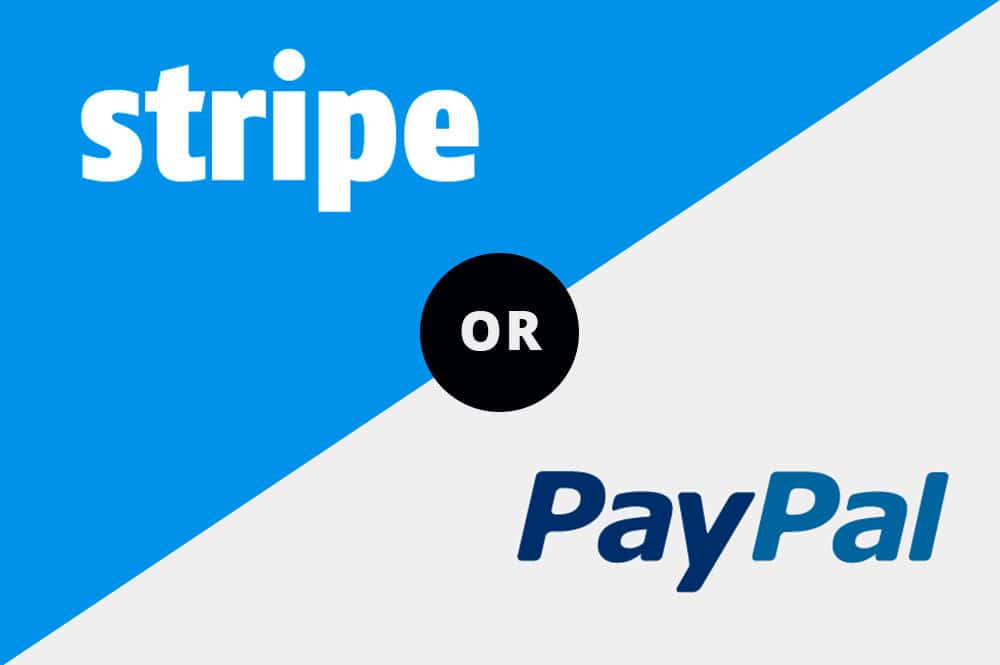Stripe: An Alternative to PayPal
November 19, 2014 — James Fulton

When deciding on payment processors for your eCommerce store, the first thing that springs to mind is probably PayPal. That’s not surprising. Since coming onto the scene in 1998, PayPal has become the default payment method for millions of eBayers and online business owners worldwide. However, there are other options to consider, and one of the most promising is Stripe. Below we’ll guide you through a comparison of PayPal and Stripe so you can determine which suits your business best.
Availability
Keep in mind that Stripe has not reached PayPal’s size yet, so you should make sure that it’s available in your country. Currently Stripe is available in several countries, including two of our biggest client bases: Australia and the United States.
Transaction Fees
Both PayPal and Stripe have transaction fees, starting at 2.9% + 30¢ per successful charge. (Note that Stripe’s base fee varies depending on country). But while Stripe’s fee stays the same as long as your annual volume is less than $1 million, PayPal’s will actually decrease to 2.5% + 30¢ once you reach a monthly volume of $3,000. It drops to 2.2% + 30¢ when you get to $10,000 per month and to an even lower rate when you hit $100,000 per month.
Sounds like a win for PayPal, right? Well, while the volume discounts are great, PayPal does throw in some extra service fees to balance it out. For instance, when you charge cards from your website, PayPal charges a fee of $5 / month for PayPal Advanced and $30 / month for PayPal Pro. PayPal Advanced requires that you offer PayPal as a payment option. In contrast, Stripe does not charge a fee for this service.
Chargeback is a bit cheaper with Stripe ($15) than with PayPal ($20).
With PayPal Advanced and PayPal Pro, there is a 3.5% fee for American Express. Stripe charges the same flat rate.
Stripe does not charge for refunds, but there is a transaction fee with PayPal.
With international transactions, PayPal charges cross-border fees and currency conversion fees. Stripe does not charge cross-border fees, but currency conversion costs 2% unless you charge in your customer’s currency.
Lastly, PayPal charges 30¢ for uncaptured authorisations and card verification transactions, whereas Stripe does not.
Speed of Transactions
PayPal usually pays out within 1 business day, while Stripe takes 7 full days (though US Stripe customers now get faster two day transfers).
Security
Both Stripe and PayPal are very stable, secure platforms, but whereas Stripe actively encourages good security, PayPal gives software developers room to make bad decisions.
When you receive credit card data on your website, Stripe.js keeps this sensitive information safe from you and others by sending it directly to Stripe’s vault instead of to your server. In other words, a server breach won’t result in any stolen credit card data and you won’t be tempted to store this data on your server. Stripe.js makes your business automatically PCI compliant.
PayPal now has a way to store cards in a vault, but the sensitive data still has to go through your server, and this puts a big security burden on the software developer or the customer who has installed the software.
Data Portability
If you decide to move from PayPal to another payment processor (like Stripe), you won’t be able to transfer your customers’ credit card data. All your existing customers will have to sign up again and you’ll probably lose some of them during the process. By contrast, Stripe allows you (and will help you) to migrate your credit card data in a secure and PCI-compliant way.
Customer Service
This is a sticking point with many PayPal users. Quite frankly, PayPal’s customer service leaves a lot to be desired. Don’t try to call them if you can help it, because it’s a toss-up whether you’ll get a knowledgeable rep or not. The waiting time may also be long. It’s simply a product of being a huge business. On the other hand, you can usually find answers online in Quick Answers, Community Forum, or Knowledgebase. You can also visit AskPaypal, which is a Twitter account devoted to answering service and support questions (M-F, 9:00 AM to 5:00 PM CST).
Stripe doesn’t yet have phone support, but there are open channels for email support and an IRC channel (#stripe on Freenode) where developers can chat and get live help from real engineers.
Don’t Put All Your Eggs in One Basket
This comparison demonstrates that PayPal and Stripe have their own merits. It really depends on how big your business is and what it needs. In spite of its volume discounts, we think PayPal should be the payment processor you start with because it’s easy to set up and widely accepted and you can receive payments quickly. Once your revenue exceeds $1,000/month, you should move on to another processor like Stripe. We advise this because PayPal takes fraud very seriously and has been known to hold money, freeze and even terminate accounts based on “high-risk” activity. The last thing you want is to be cut off from all your money by PayPal. Nevertheless, it’s important that you keep PayPal as a secondary payment option, since many of your customers will prefer it.
Author

James Fulton
Since founding the company in 2012, James has been the driving force behind SGD's success. As a visionary leader, he guides the SGD team, encouraging them to continually excel in digital design. James inspires a culture of growth, challenging each team member to surpass their own limits and set new standards in the field. This commitment to excellence not only propels personal development but also ensures SGD consistently delivers exceptional results for its clients.
Next Article
The Case for a Custom 404 Page
November 14, 2014Get Started
"*" indicates required fields


Tell us about your project
"*" indicates required fields






